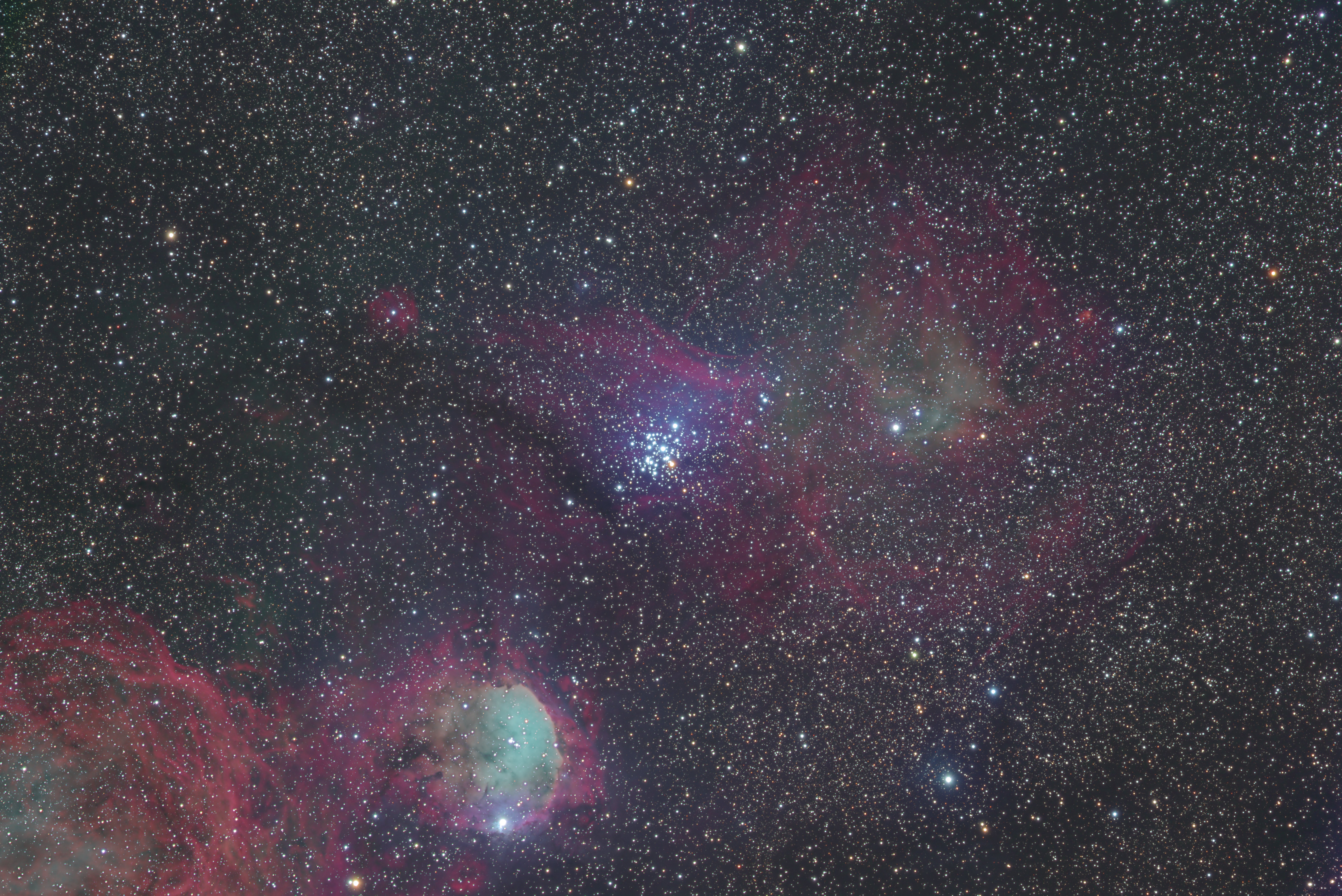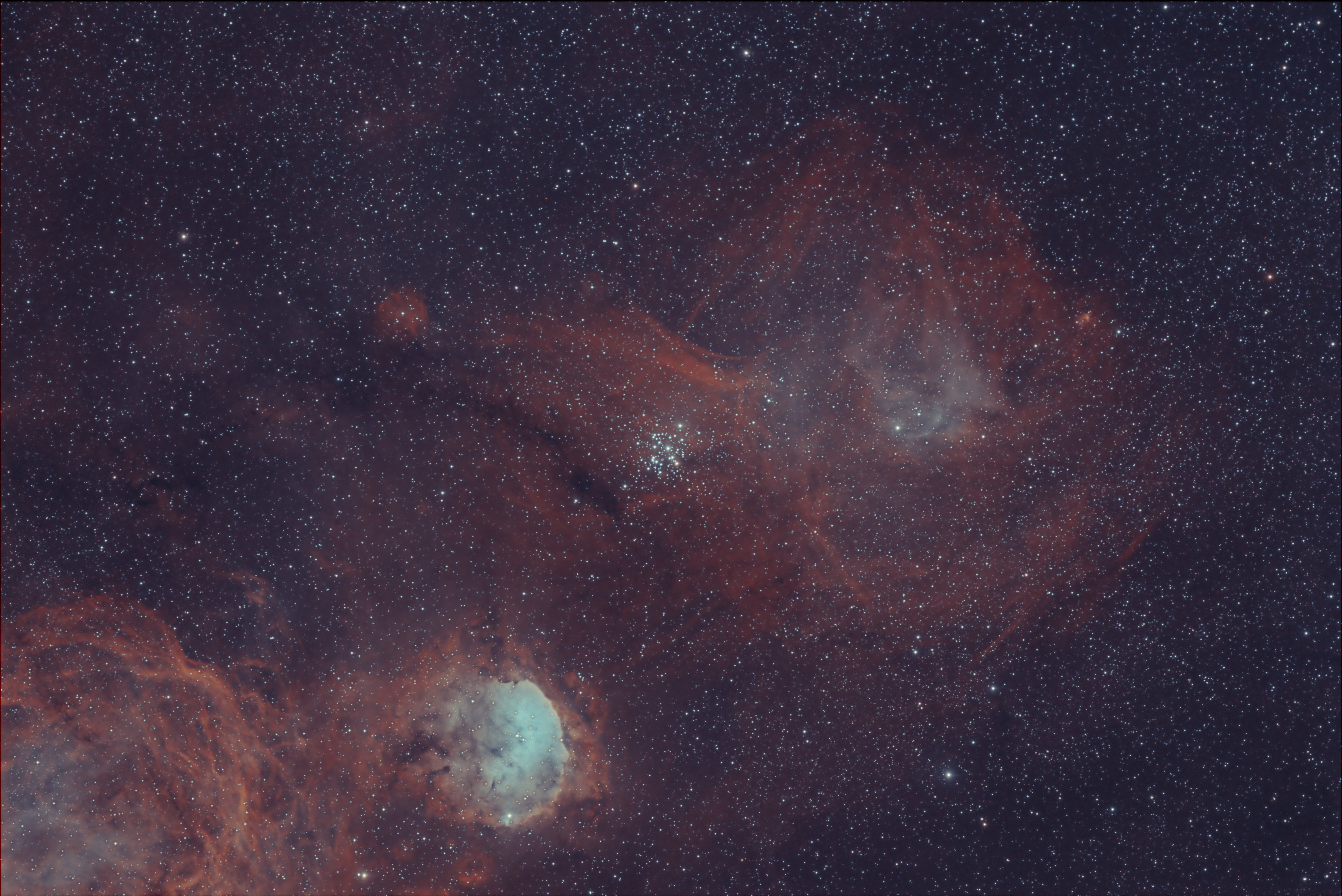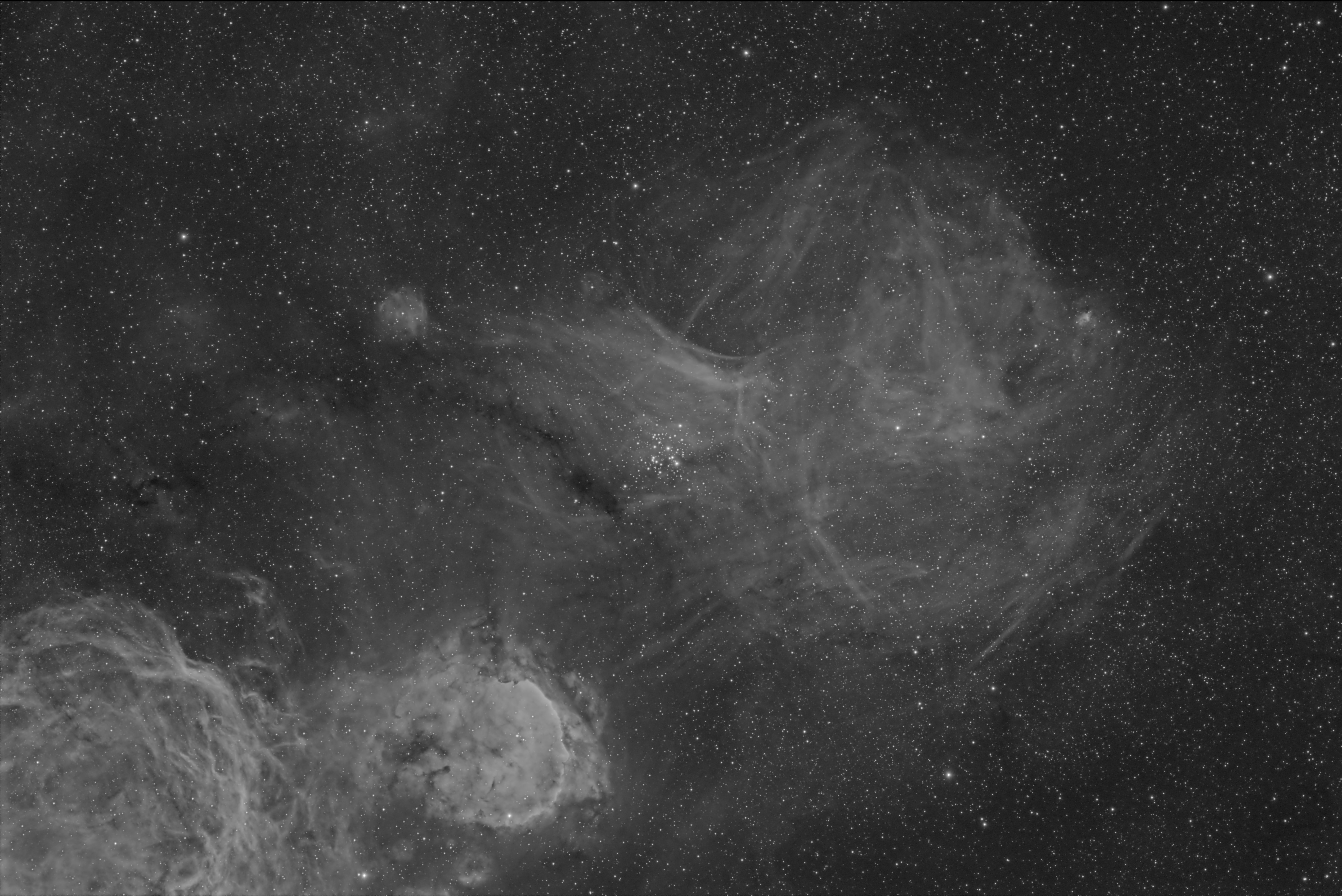|
NGC 3293/3324 (Car)

Click on the image for a larger version
| Date/Site: |
March 17. and 18., 2015, Astrofarm at the Hacienda los Andes, Chile |
Exposure/
Filter: |
LRGB: each 6 x 600 seconds (-20°C) |
| Camera: |
FLI PL29050 with Astrodon II-filters |
Optics/
Instrument: |
Astro-Physics 305mm f/3.8 Riccardi-Honders on AP1200 GTO |
|
Guiding: Lodestar attached to a 61mm-finder,
focusing: FLI Atlas and FocusMax,
image acquisition: MaximDL 5,
calibration: MaximDL, processing: PixInsight 1.8 |
NGC 3293 is probably the most beautiful open cluster in the skies.
It was planned to give NGC 3324 it's own imaging session and I didn't expect it to get entirely and so prominently into this field. The large field of the Riccardi-Honders and the large sensor of the PL29050 made it possible.
In Chile NGC 3324 is called the "Gabriela-Mistral-nebula" to honour the Vicuña-born poet and Nobel-price laureate; the nebula's outline resembles her prominent profile.
Narrowband-frames in Hα and OIII were added to the RGB-data to enhance the signal of the glowing gases in this star-forming region:
NGC 3293 (Carina), the Gem-Cluster and NGC 3324, the Gabriela-Mistral-Nebula

Click on the image for a larger version
| Date/Site: |
March 17. and 18., 2015, Astrofarm at the Hacienda los Andes, Chile |
Exposure/
Filter: |
LRGB, Hα and OIII: each 6 x 600 seconds (-20°C) |
| Camera: |
FLI PL29050 with Astrodon II-filters |
Optics/
Instrument: |
Astro-Physics 305mm f/3.8 Riccardi-Honders on AP1200 GTO |
|
Guiding: Lodestar attached to a 61mm-finder,
focusing: FLI Atlas and FocusMax,
image acquisition: MaximDL 5,
calibration: MaximDL, processing: PixInsight 1.8 |
Combining narrowband-frames to a colour-image creates pictures with an aesthetic appeal of their own.
Following the modified bicolor technique by Steve Cannistra for combining Hα- and OIII-frames to create a synthetic green channel and especially Gerhard Wechselberger's Pixelmath-implementation in PixInsight I created a synthetic blue channel from the narrowband-channels. Combining them to a RGB-image while assigning Hα to red, OIII to green and the synthetic channel to blue created a colourful image with enhanced emission nebulae.
NGC 3293 (Carina), the Gem-Cluster and NGC 3324, the Gabriela-Mistral-Nebula; Hα, OIII and a synthetic blue channel following Cannistra/Wechselberger

Click on the image for a larger version
| Date/Site: |
March 17. and 18. March 2015, Astrofarm at the Hacienda los Andes, Chile |
Exposure/
Filter: |
Hα and OIII: each 6 x 600 seconds (-20°C) |
| Camera: |
FLI PL29050 with Astrodon II-filters |
Optics/
Instrument: |
Astro-Physics 305mm f/3.8 Riccardi-Honders on AP1200 GTO |
|
Guiding: Lodestar attached to a 61mm-finder,
focusing: FLI Atlas and FocusMax,
image acquisition: MaximDL 5,
calibration: MaximDL, processing: PixInsight 1.8 |
The narrowband images almost make it alone.
The Hα-image alone:
NGC 3293 (Carina), the Gem-Cluster and NGC 3324, the Gabriela-Mistral-Nebula, Hα only

Click on the image for a larger version
| Date/Site: |
March 17. and 18., 2015, Astrofarm at the Hacienda los Andes, Chile |
Exposure/
Filter: |
Hα: 6 x 600 seconds (-20°C) |
| Camera: |
FLI PL29050 with Astrodon II-filters |
Optics/
Instrument: |
Astro-Physics 305mm f/3.8 Riccardi-Honders on AP1200 GTO |
|
Guiding: Lodestar attached to a 61mm-finder,
focusing: FLI Atlas and FocusMax,
image acquisition: MaximDL 5,
calibration: MaximDL, processing: PixInsight 1.8 |
The delicate whisps of the ionized hydrogen are most prominent in this black and white redering.
And the OIII-image to round it up:
NGC3293 (Carina), the Gem-Cluster and NGC 3324, the Gabriela-Mistral-Nebula, Hα only

Click on the image for a larger version
| Date/Site: |
March 17. and 18., 2015, Astrofarm at the Hacienda los Andes, Chile |
Exposure/
Filter: |
OIII: 6 x 600 seconds (-20°C) |
| Camera: |
FLI PL29050 with Astrodon II-filters |
Optics/
Instrument: |
Astro-Physics 305mm f/3.8 Riccardi-Honders on AP1200 GTO |
|
Guiding: Lodestar attached to a 61mm-finder,
focusing: FLI Atlas and FocusMax,
image acquisition: MaximDL 5,
calibration: MaximDL, processing: PixInsight 1.8 |
The mass of ionized oxygen-gas is a clear indicator that this star-forming has already produced several generations of stars. The heavy atoms were injected into the interstellar medium by titanic supernova-explosions, ripping the stars apart.
|




